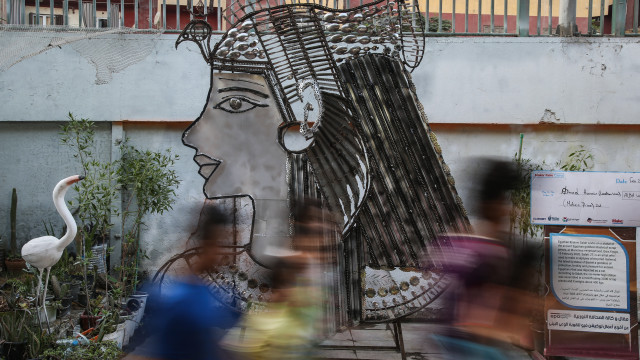Under a temple in the ancient ruined city of Taposiris Magna on the Egyptian coast, archaeologists have discovered a huge, impressive tunnel that experts describe as a "geometrical marvel".
During the ongoing excavations and studies of the temple, Kathleen Martinez of the University of Santo Domingo in the Dominican Republic and her colleagues discovered the structure 13 meters underground. The two-meter tunnel was carved through an incredible 1,305 meters of sandstone, "Science alert" reported.
According to the Egyptian Ministry of Tourism and Antiquities, its design is remarkably similar to the 1,036-meter Eupalinos Tunnel, a 6th-century BC aqueduct. on the Greek island of Samos. Often described as an engineering marvel, the canal was unprecedented in design and construction for its time.
Although the Taposiris Magna tunnel is not without analogue, its engineering solution is nevertheless equally impressive.
Parts of the tunnel are submerged in water, although its resemblance to the Eupalinos Tunnel aside, its purpose is currently unknown.
Martinez, who has been working at Taposiris Magna since 2004 in search of the lost tomb of Cleopatra VII, thinks the tunnel could be a promising lead. Previously, excavations had uncovered clues that seemed to point to the famous queen and the last of the Ptolemies.
Taposiris Magna was founded around 280 BC. by Ptolemy II, son of Alexander the Great's famous general and one of Cleopatra's predecessors (she herself ruled from 51 BC until her death by suicide in 30 BC). The team believes the temple was dedicated to the god Osiris and his queen, the goddess Isis, a deity with whom Cleopatra had a strong connection. Coins with the names and images of Cleopatra and Alexander the Great, as well as figurines of Isis, were found there.
Burial shafts with Greco-Roman burials were also discovered in the temple. It is possible - if they are found there at all - that Cleopatra and her husband Mark Antony were buried in such tombs.
Future work may provide more information on whether the new tunnel could lead to these long-lost tombs.
The next stage will be the exploration of the nearby Mediterranean Sea. Between 320 and 1303 AD a series of earthquakes hit the coast, causing part of the temple to collapse and be swallowed by the waves. In addition, previous excavations revealed a network of tunnels extending from Lake Mariut to the Mediterranean Sea.
Regardless of whether any tombs are discovered, a thorough excavation of these ruins may tell us more about the mysterious ancient city. Some treasures have already been found in the tunnel: pieces of pottery and a rectangular block of limestone.
As the then Antiquities Minister Zahi Hawass said in 2009: "If we find the tomb of Cleopatra and Mark Antony, it will be the most important discovery of the 21st century. If we don't find the tomb of Cleopatra and Mark Antony, we will make great discoveries here, in the temple and outside it"./BGNES
Archaeologists have discovered a trail to Cleopatra's tomb







